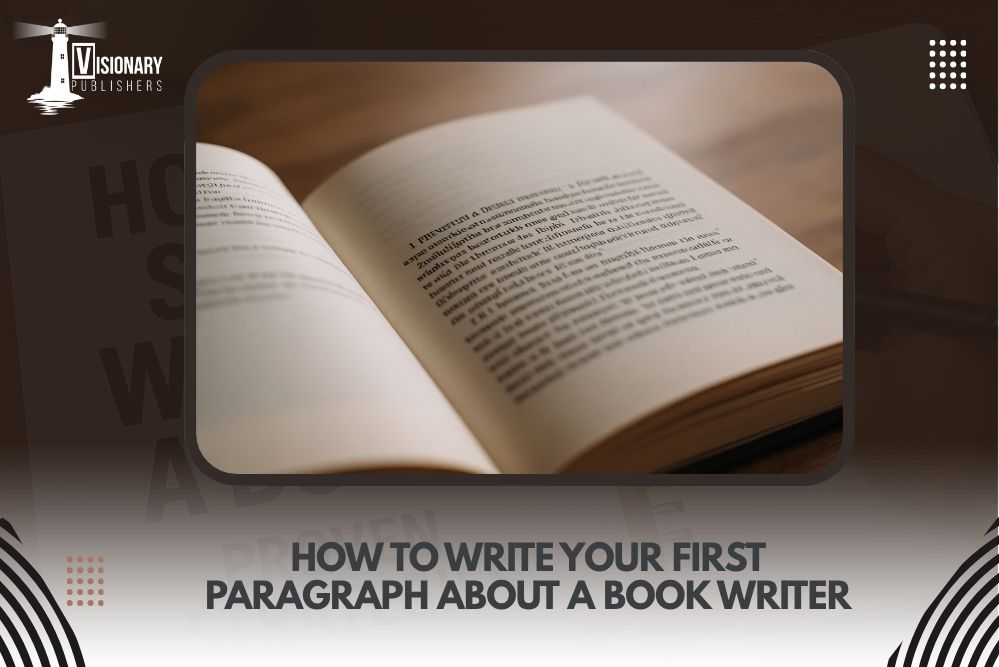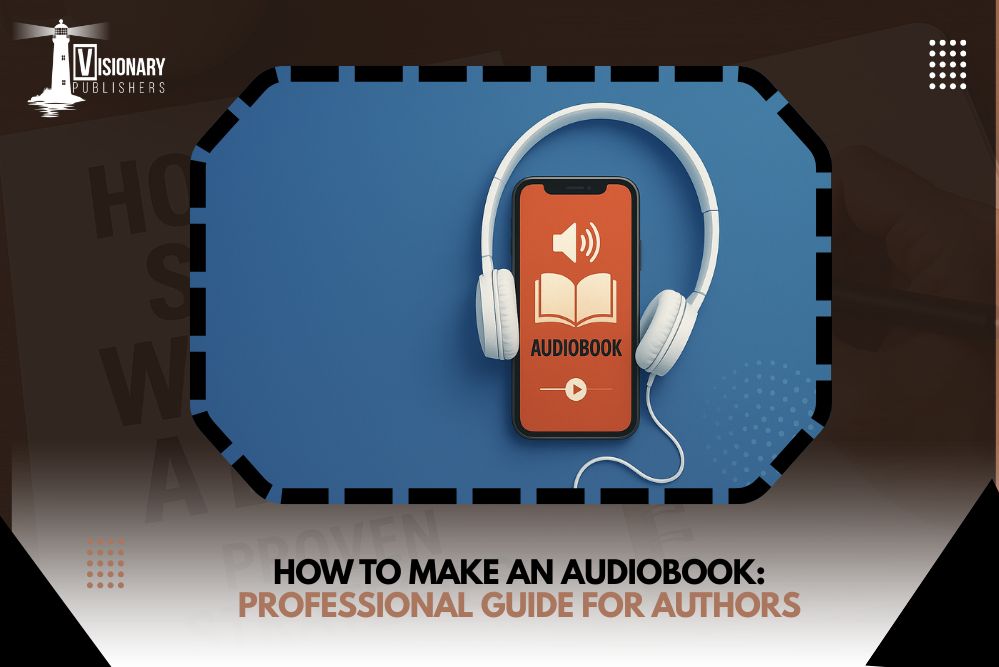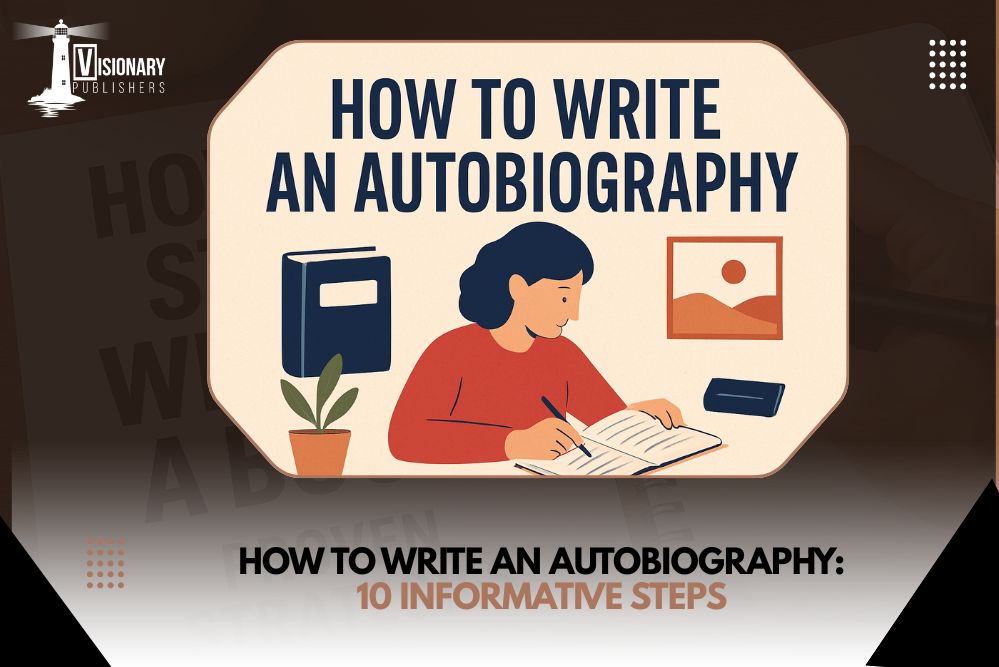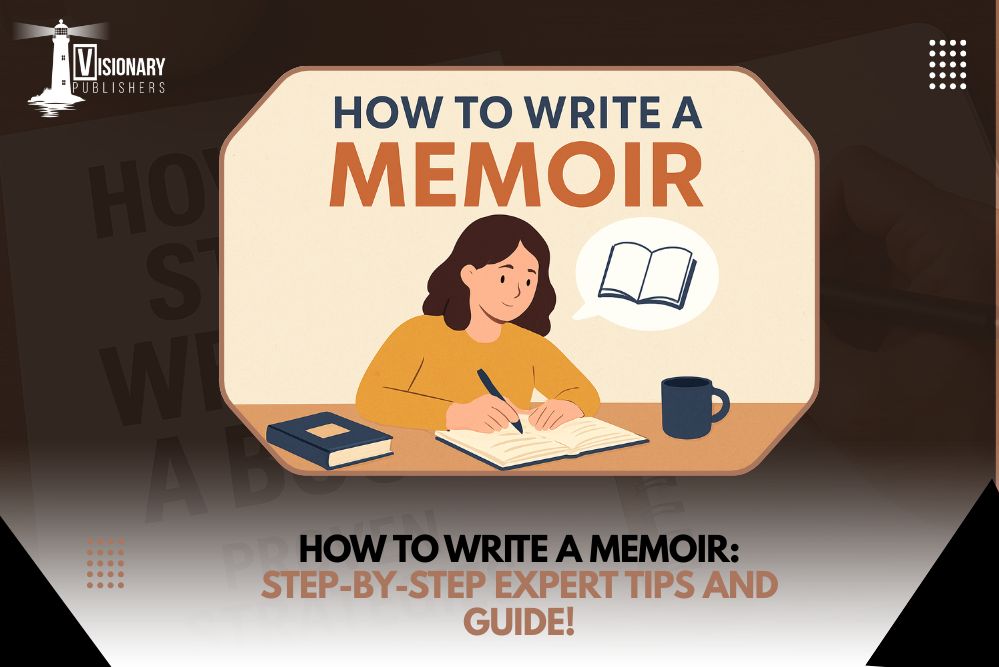Intro
Every book begins with a single paragraph. That first impression shapes how readers feel, whether they’re opening a new novel, exploring a memoir, or reading about an author’s life. If you’ve ever wondered how to write a paragraph about a book, you’re not alone. Many writers hesitate when faced with the blank page. The opening words matter because they carry weight, setting the tone for everything that follows.
Think about the times you’ve started reading a book. The first lines either pulled you in or left you drifting away. The same is true when writing about a book or its writer. A well-written paragraph doesn’t just state facts. It invites readers into the world of the author, sparks curiosity, and makes them want to continue.
This guide will help you understand what goes into writing a strong first paragraph. We’ll explore why it matters, how to build it step by step, and the common mistakes to avoid. You’ll also see practical examples and learn how professionals approach this craft. And if you feel the process is too heavy to carry on your own, remember that services like Visionary Publishers exist to guide you through the journey.

Understanding What A Paragraph About A Book Means
Before diving into techniques, let’s pause and ask: what is a paragraph about a book? At its heart, it’s a short section of writing that captures the essence of the book and its writer. It’s not just a retelling of the plot or a dry list of facts. Instead, it’s a thoughtful way to highlight the book’s theme, introduce the writer’s voice, and share why it matters.
When you write such a paragraph, you’re creating a bridge between the book and the reader. A good paragraph balances clarity with feeling. It gives just enough detail to inform while leaving space for curiosity. For example, if you were writing about To Kill a Mockingbird, you might mention how Harper Lee’s story addresses justice and childhood innocence. You wouldn’t retell every chapter, but you’d capture the heart of what makes the book important.
The key is focus. A paragraph isn’t long enough for every detail, so you must choose what matters most. That’s why starting with a clear purpose is so important. Do you want to inform? To persuade? To reflect? Once you know the purpose, the words fall into place more naturally.

Why the First Paragraph of a Book or About a Writer Matters
The first paragraph of a book or about its writer carries enormous power. It’s the door through which readers enter. If the door feels inviting, they’ll walk in with excitement. If it feels heavy, dull, or confusing, they may never take the next step.
Think about the books you remember most. Often, it’s the opening that lingers in your memory. George Orwell’s 1984 begins with a clock striking thirteen, instantly unsettling and drawing readers into a strange world. That’s the power of an opening paragraph—it sets expectations, mood, and voice.
The same applies when writing about a writer. Imagine you’re describing Jane Austen. A bland paragraph might say, “Jane Austen was an English novelist.” But a compelling one could say, “Jane Austen gave us love stories laced with wit, irony, and sharp observations about class and society.” The difference is tone and connection.
Your first paragraph tells readers how they should feel. Should they laugh, think, reflect, or be curious? By setting that direction early, you help readers step into the book’s world with clarity.
Step-by-Step Guide to Writing Your First Paragraph

Writing your first paragraph can feel like standing at the edge of a cliff. The view is wide, the possibilities endless, but you have to take the first step. Here’s a clear path forward:
Step 1: Define Your Purpose
Ask yourself: Why am I writing this paragraph about a book? If it’s for a school assignment, the goal might be to summarize. If you are writing for a book review, the purpose might be to persuade. If it’s an introduction to a writer, the goal could be to inspire interest. Purpose shapes tone.
Step 2: Start With a Hook
Every strong paragraph begins with a hook. This could be a question, a surprising fact, or a striking image. For instance: “What if courage was the only way to survive in a world ruled by fear?” This line invites curiosity. Your hook doesn’t need to be flashy, but it should spark interest.
Step 3: Introduce the Book and Writer
Once you’ve hooked the reader, give them context. Mention the title of the book and the writer’s name. Keep it natural. Instead of saying, “The book Pride and Prejudice was written by Jane Austen,” you might write, “In Pride and Prejudice, Jane Austen brings to life a world of manners, misunderstandings, and unexpected love.”
Step 4: Highlight the Theme or Central Idea
Don’t get lost in the details. Focus on the theme. What is the book really about? Is it love, survival, identity, or justice? Sharing the central theme keeps your paragraph grounded and clear.
Step 5: Add Personal Reflection
A paragraph feels empty without a human touch. Share what the book means to you or how it might affect others. You could write, “This story reminds us that even small acts of kindness can change lives.” Reflection creates connection.
Step 6: Wrap It Up Naturally
End your paragraph with a sentence that ties everything together. Think of it as closing the door gently instead of slamming it. For example, “Through its vivid characters and timeless themes, the book continues to speak to readers across generations.”
When you follow these steps, your paragraph flows naturally. It moves from hook to context, theme to reflection, and closes with strength.
Tips to Make Your Paragraph About a Book Stand Out
Writing a strong paragraph is not only about stringing sentences together, it’s about creating an experience for the reader. Below are some detailed tips that will help you write paragraphs that feel alive, engaging, and meaningful.
-
Keep It Simple, But Not Shallow
Clarity is the heart of good writing. Use short, direct sentences rather than long, winding ones. Simplicity doesn’t mean your paragraph should lack depth. Instead, it means avoiding unnecessary jargon or complicated phrasing that could confuse the reader. For example, instead of saying, “The narrative articulates profound thematic elements embedded within its storyline,” you can say, “The story explores big themes like friendship, courage, and justice.” Simple words carry just as much power when they are chosen with care.
-
Be Specific, Don’t Generalize
General statements weaken a paragraph. Phrases like “This book is good” or “The story is interesting” tell the reader nothing. Specific details are what make your writing memorable. Instead of “The book is sad,” describe how it makes readers feel: “The story leaves you with a heavy heart as the character’s struggles mirror real-life battles against loneliness.” These details not only inform but also create emotional impact.
-
Show, Don’t Just Tell
One of the most common pieces of writing advice is “show, don’t tell.” This applies perfectly to your paragraph. Instead of telling the reader that a book is funny, show them with an example: “Rowling fills the pages with humor, like when Ron’s spell backfires and leaves him hiccuping slugs for hours.” Specific examples give your writing texture and help readers see what you mean.
-
Start With a Vivid Hook
Hooks aren’t just for entire books — they matter for single paragraphs too. A hook might be a thought-provoking question, a surprising fact, or a bold statement. For example, instead of writing, “The book is about love,” you could start with, “What if love was the only force strong enough to survive betrayal and time?” A hook grabs attention and makes readers curious to keep reading.
-
Balance Emotion and Information
Great paragraphs live in the balance between facts and feelings. Yes, you need to mention the title, author, and theme, but don’t stop there. Layer in emotion. Tell the reader why the book matters. For instance: “In Khaled Hosseini’s The Kite Runner, betrayal and redemption form the backbone of the story, leaving readers both heartbroken and hopeful.” Emotion makes your words stick.
-
Use Imagery to Paint a Picture
Words can create mental images, and that’s exactly what pulls readers closer. Sensory details — sights, sounds, smells, tastes, or feelings — transform writing from flat to vivid. Instead of saying, “It was summer,” write, “The air smelled like fresh-cut grass, and the sun beat down on cracked sidewalks.” A single line of imagery can transport readers into the scene.
-
Keep the Flow Natural
Even the best ideas can lose power if they don’t flow smoothly. Each sentence should feel like a natural step to the next. Avoid jumping around from one point to another. A simple trick is to read your paragraph aloud. If it sounds choppy or forced, rewrite until it feels like a conversation. Natural flow makes reading effortless.
-
Avoid Overcrowding the Paragraph
A paragraph is not a place to tell everything. Think of it as a window, not the entire house. Choose one or two main ideas and focus only on those. Overloading with backstory, too many character names, or multiple themes will overwhelm the reader. A good rule of thumb: if your paragraph feels cluttered, trim until it breathes.
-
Match the Tone to the Book
Tone matters. If the book is playful and lighthearted, your paragraph should reflect that with cheerful words and a lively rhythm. If the book is serious and dark, your writing should be steady and thoughtful. Tone gives readers an immediate sense of what to expect. Imagine writing about Alice in Wonderland with a heavy, formal tone—it would feel mismatched. Keep your voice aligned with the book’s spirit.
-
Rewrite Until It Feels Right
Very few writers nail the perfect paragraph on the first try. Even published authors revise again and again. Don’t be afraid to write a messy draft, then improve it. Ask yourself: does it sound natural? Does it capture the essence of the book? Does it make me curious to read more? If the answer is no, tweak it until the paragraph feels alive. Writing is more about rewriting than perfection.
Examples of Good Paragraphs
Example 1: Action-Driven
“In George Orwell’s 1984, a simple clock striking thirteen throws readers into a world that feels familiar yet frightening. Through Winston’s eyes, we step into a society ruled by fear, where truth itself bends under pressure. The book’s chilling vision forces us to ask how much freedom we are willing to surrender.”
Example 2: Author-Focused
“Jane Austen, with her sharp eye for social detail, turns ordinary encounters into timeless drama. In Pride and Prejudice, she explores pride, love, and the quiet rebellion of a strong-minded heroine. Her first paragraph doesn’t just tell a story—it opens a window into a society caught between tradition and change.”
Example 3: Reflective
“Reading The Diary of a Young Girl by Anne Frank feels like entering the heart of a young girl’s hopes, fears, and resilience. Each paragraph captures the innocence of youth against the backdrop of war. The book reminds us how courage can shine even in the darkest times.”
These examples show how a paragraph from a book or about a writer can inform, inspire, and connect.
Common Mistakes to Avoid
Many writers fall into traps when starting. Here are mistakes you can sidestep:
- Retelling too much. A paragraph isn’t a summary of the whole book.
- Being vague. Avoid phrases like “This book is good.” Explain why.
- Forgetting the hook. Without a strong start, readers may drift away.
- Using clichés. Phrases like “unputdownable” or “must-read” feel empty without detail.
- Ignoring tone. If the book is playful, your paragraph should feel light, not heavy.
How to Revise and Polish Your Paragraph
Writing is rewriting. Once you’ve drafted your paragraph, give yourself space to improve it.
- Read it aloud. Your ears will catch what your eyes miss.
- Check for flow. Does one sentence lead naturally into the next?
- Trim clutter. Cut out words that don’t add value.
- Ask for feedback. Sometimes another set of eyes sees what you can’t.
- Make sure the theme shines. If the main idea isn’t clear, rewrite until it is.
Try Visionary Publishers’ Book Writing Services and Let Us Take Care
Writing a paragraph about a book or an entire manuscript can feel overwhelming. Finding the right words, choosing the right structure, and capturing the heart of a story takes skill. That’s where Visionary Publishers comes in.
We believe every author has a story worth telling. You don’t have to worry about writing the perfect paragraph or pulling together a polished manuscript. Our expert book writers are here to help. We work with you to shape your ideas, refine your voice, and create writing that speaks to your audience.
Our services go beyond writing. We offer:
- Book writing: Transforming your ideas into complete manuscripts.
- Editing and proofreading: Polishing your words for clarity and impact.
- Publishing and design: Ensuring your book looks as good as it reads.
- Marketing strategies: Helping your book find its audience.
With Visionary Publishers, you’re not just hiring a service—you’re gaining a creative partner. Whether it’s a single paragraph or a full-length book, we handle the details so you can focus on your vision.
To Sum Up
A strong paragraph about a book isn’t just a block of text—it’s an invitation. It invites readers to step into the world of the author, to feel something, and to want more. By focusing on purpose, clarity, and connection, you can write paragraphs that resonate. The first paragraph of a book or about its writer is more than words on a page. It’s a moment of connection between writer and reader. And when it’s done well, it lingers long after the page is turned. If you’re ready to share your story but need guidance, Visionary Publishers is here to help. Together, we can turn your ideas into writing that matters.
Frequently Asked Questions
How do you write a paragraph for a book?
Start with the title and author, then highlight the theme or message. Keep it short, clear, and engaging. Add your personal insight to make it meaningful.
How do I start the first paragraph of a book?
Begin with a hook that grabs attention. Use a question, a vivid image, or a surprising fact to set the tone and draw readers in.
How to write a one-paragraph summary of a book?
Focus on the main theme. Skip details about every event. Keep it simple, highlight the big idea, and end with a personal reflection or takeaway.
What is a good introduction for a book?
A good introduction sets context by naming the book and author while hinting at the theme. It should feel strong and welcoming, not heavy or cluttered.
How to introduce a book in a creative way?
Use imagination. Start with a vivid scene, a question, or an emotion. For example, “What if survival depended on the choices you made in silence?” Creativity makes readers curious.






